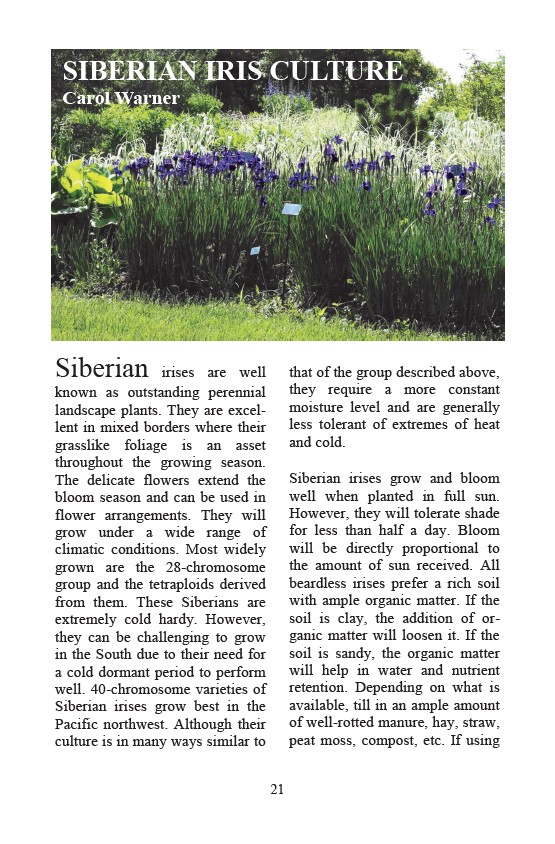
SIBERIAN IRIS CULTURE
Carol Warner
21
Siberian irises are well
known as outstanding perennial
landscape plants. They are excel-lent
in mixed borders where their
grasslike foliage is an asset
throughout the growing season.
The delicate flowers extend the
bloom season and can be used in
flower arrangements. They will
grow under a wide range of
climatic conditions. Most widely
grown are the 28-chromosome
group and the tetraploids derived
from them. These Siberians are
extremely cold hardy. However,
they can be challenging to grow
in the South due to their need for
a cold dormant period to perform
well. 40-chromosome varieties of
Siberian irises grow best in the
Pacific northwest. Although their
culture is in many ways similar to
that of the group described above,
they require a more constant
moisture level and are generally
less tolerant of extremes of heat
and cold.
Siberian irises grow and bloom
well when planted in full sun.
However, they will tolerate shade
for less than half a day. Bloom
will be directly proportional to
the amount of sun received. All
beardless irises prefer a rich soil
with ample organic matter. If the
soil is clay, the addition of or-ganic
matter will loosen it. If the
soil is sandy, the organic matter
will help in water and nutrient
retention. Depending on what is
available, till in an ample amount
of well-rotted manure, hay, straw,
peat moss, compost, etc. If using